The Evolution of Customer Service Through Technology
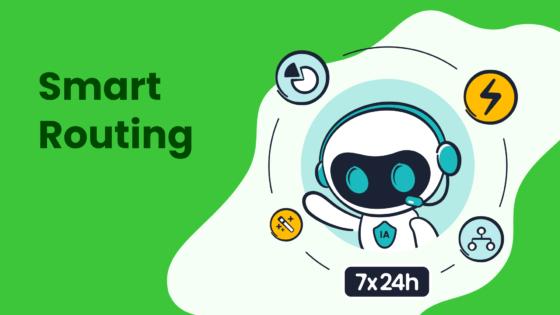
Technology continues to transform how you interact with businesses, reshaping customer service and operations across industries. Nearly 50% of companies cite enhancing customer satisfaction as a primary driver for digital transformation. The rise of AI-powered tools has reduced workloads for 70% of customer service agents, while 31% of organizations report faster response times. Yet, balancing innovation with human connection remains crucial. Although 75% of consumers prefer speaking with human agents, AI tools like Sobot's solutions help bridge the gap by combining efficiency with personalized service. This balance ensures your experience remains seamless and trustworthy.
The Historical Evolution of Customer Service and Operations
From Traditional Call Centers to Digital Transformation
Customer service has come a long way from the days of traditional call centers. Initially, businesses relied on phone-based support, where agents handled inquiries one call at a time. This method often led to long wait times and limited efficiency. However, the digital transformation era introduced groundbreaking changes. Companies began adopting tools like AI and automation to streamline operations. For example:
- AI now automates repetitive tasks, allowing agents to focus on complex issues.
- Live tone and mood detection tools help agents respond to emotions effectively.
- Digital tools enhance connections across departments, improving collaboration.
Despite these advancements, challenges remain. Studies show that 43% of customers still feel dissatisfied with the service they receive. This highlights the need for continuous improvement in customer experiences, even in a digital-first world.
The Emergence of Omnichannel Solutions
The rise of omnichannel solutions has revolutionized how you interact with businesses. These systems allow you to connect with companies through multiple platforms, such as email, social media, and live chat, creating a seamless experience. Here’s why omnichannel strategies matter:
- They enhance customer satisfaction and loyalty.
- They optimize communication and provide better access to information.
- They rely on digital transformation to deliver a unified experience.
For instance, over 80% of consumers prefer brands that personalize their shopping experiences. AI chatbots, like those offered by Sobot, can increase conversions by up to 50%. By integrating channels into a single platform, businesses ensure you receive consistent and efficient support.
The Role of Technology in Shaping Modern Customer Service
Technology plays a crucial role in shaping how businesses serve you today. Tools like chatbots, CRM software, and self-service portals have transformed customer interactions. Here’s a quick overview of their impact:
| Technology Tool | Role in Customer Service | Benefits |
|---|---|---|
| Chatbots | Conduct conversations via messaging platforms. | Provide instant responses and direct help. |
| IVR Systems | Use voice recognition for phone interactions. | Handle common queries without agents. |
| CRM Software | Manage customer interactions and automate processes. | Offer a complete view of customer history. |
Sobot’s solutions, such as its AI-powered Voicebot and unified workspace, exemplify how technology enhances efficiency. These tools reduce response times and improve personalization, ensuring your needs are met quickly and effectively.
Key Technological Advancements in Customer Service
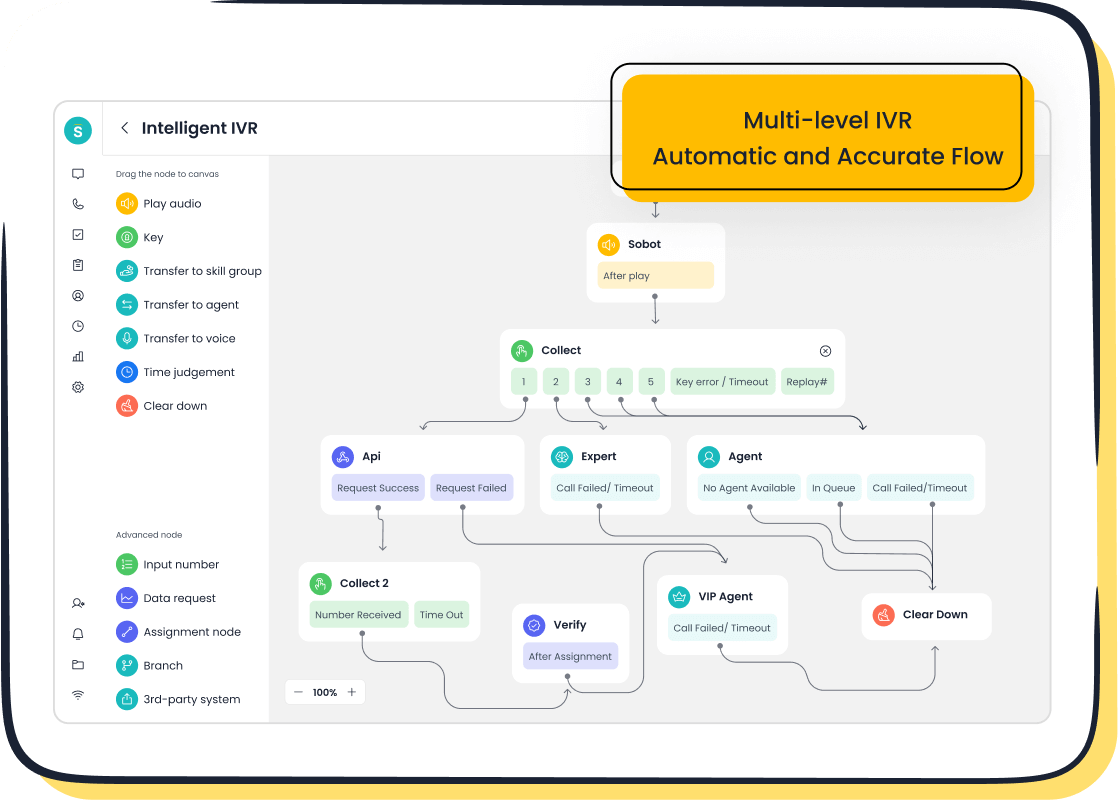
AI-Powered Chatbots and Automation
AI-powered chatbots have revolutionized customer support by offering instant, automated customer care. These chatbots handle multiple inquiries simultaneously, reducing wait times and improving efficiency. For example, AI tools can automate repetitive tasks like answering FAQs, freeing agents to focus on complex issues. This automation speeds up ticket resolution by 52%, saving time and lowering operational costs by 35%.
| Benefit Description | Statistic |
|---|---|
| AI chatbots can handle multiple inquiries simultaneously | Reduces wait times for customers |
| AI can automate repetitive tasks | Lowers operational costs |
| AI automation resolves tickets faster | 52% faster resolution |
| AI adoption leads to cost reduction in operations | 35% reduction |
| Support agents using AI handle more inquiries per hour | 13.8% increase |
| AI-enabled teams save time on calls | 45% time savings |
| AI improves quality and consistency of support | 35% increase in quality |
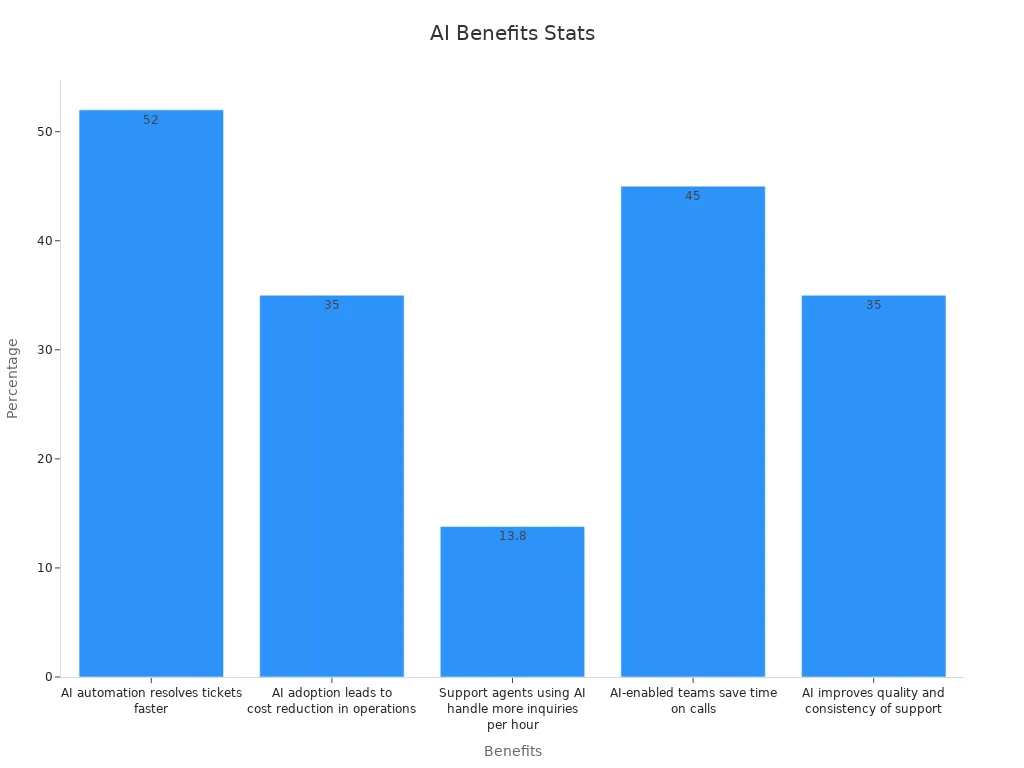
Sobot’s AI-powered chatbots exemplify this innovation. These tools provide multilingual support, integrate with platforms like WhatsApp, and offer 24/7 availability. By combining AI with human agents, businesses can deliver faster, more personalized customer care, enhancing the overall customer experience.
CRM Systems for Enhanced Customer Experience
Customer relationship management (CRM) systems play a vital role in improving customer interactions. These systems centralize customer data, enabling businesses to track interactions, analyze behavior, and personalize communication. Metrics like customer satisfaction scores and retention rates confirm CRM’s effectiveness in nurturing relationships and boosting customer loyalty.
| Metric | Description |
|---|---|
| Customer Acquisition Cost | Evaluates the cost of acquiring a new customer, indicating marketing and sales efficiency. |
| Customer Lifetime Value | Measures long-term profitability from customers, reflecting CRM's role in nurturing relationships. |
| Conversion Rate | Indicates how effectively leads are converted, showcasing CRM's effectiveness in the sales process. |
| Churn Rate | Assesses the rate of customer loss, highlighting CRM's ability to retain customers. |
| Customer Satisfaction Score | Directly reflects CRM's impact on customer experience, guiding improvements. |
| Retention Rate | Evaluates customer retention over time, showing CRM's effectiveness in building relationships. |
| Lead Response Time | Measures the speed of lead follow-up, critical for conversion rates. |
| Pipeline Velocity | Indicates the speed of deals moving through the sales pipeline, reflecting CRM's efficiency. |
| Customer Engagement Score | Gauges customer interaction levels, showing CRM's role in enhancing engagement. |
| ROI on CRM Investment | Compares benefits of CRM against costs, determining overall effectiveness. |
Sobot’s unified workspace integrates CRM capabilities, allowing agents to access customer data in real-time. This feature improves lead response times and enhances pipeline velocity, ensuring customers receive timely and efficient support.
Data Analytics and Predictive Insights
Data analytics and predictive insights transform customer service by enabling businesses to anticipate customer needs. Predictive analytics reduces wait times, improves satisfaction, and lowers operational costs by addressing issues before they escalate. It also helps allocate resources efficiently, ensuring support teams meet demand effectively.
- Predictive analytics enhances customer service efficiency by enabling faster response times, which reduces customer wait times.
- It improves customer satisfaction by proactively addressing issues, leading to a more enjoyable experience.
- Cost efficiency is achieved by minimizing support requests through early issue resolution, lowering operational costs.
- Better resource allocation is facilitated by predicting support demand, ensuring efficient deployment of support staff.
Brinks Home, for instance, used AI and data analytics to gather customer transaction data and product usage information. This approach improved decision-making and enhanced the customer experience. Sobot’s solutions leverage data analytics to provide actionable insights, helping businesses optimize operations and deliver superior customer support.
Sobot's Voice/Call Center: A Game-Changer in Customer Service
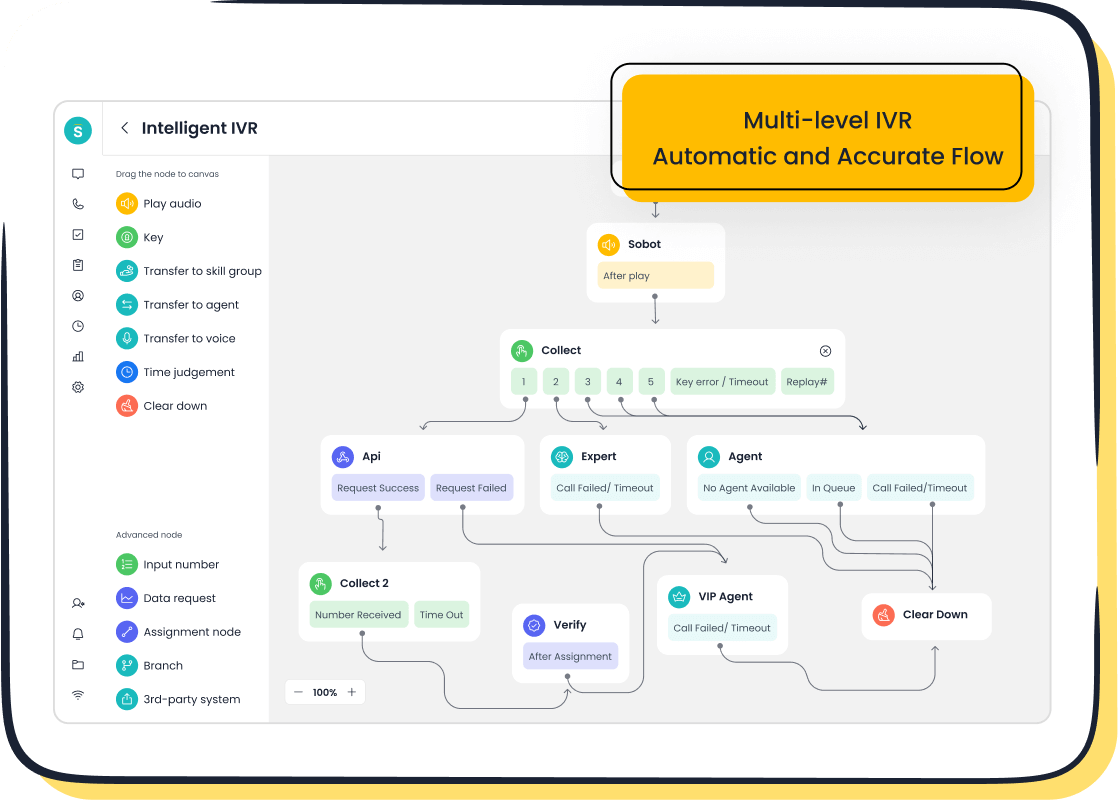
Sobot's Voice/Call Center represents a significant leap forward in customer service technology. It combines advanced features like intelligent IVR, AI-powered Voicebot, and global number availability to deliver seamless communication experiences. Whether you're a small business or a large enterprise, this solution ensures that your customer interactions are efficient, personalized, and reliable.
Transforming Customer Service Metrics
Sobot's Voice/Call Center has redefined how businesses measure success in customer service. By leveraging cutting-edge technology, it has significantly improved key performance indicators. Here's how it compares to traditional models:
| Metric | Improvement |
|---|---|
| Reduction in inbound discussion | 20% |
| Positive feedback rate | 96% + |
| Correct answers rate | 80% + |
| Customer satisfaction (CSAT) | 97% |
| Problem resolution rate | 85% |
| Customer happiness | 99% |
| Sign-off rate | 35% increase |
| COD collection rate | 40% increase |
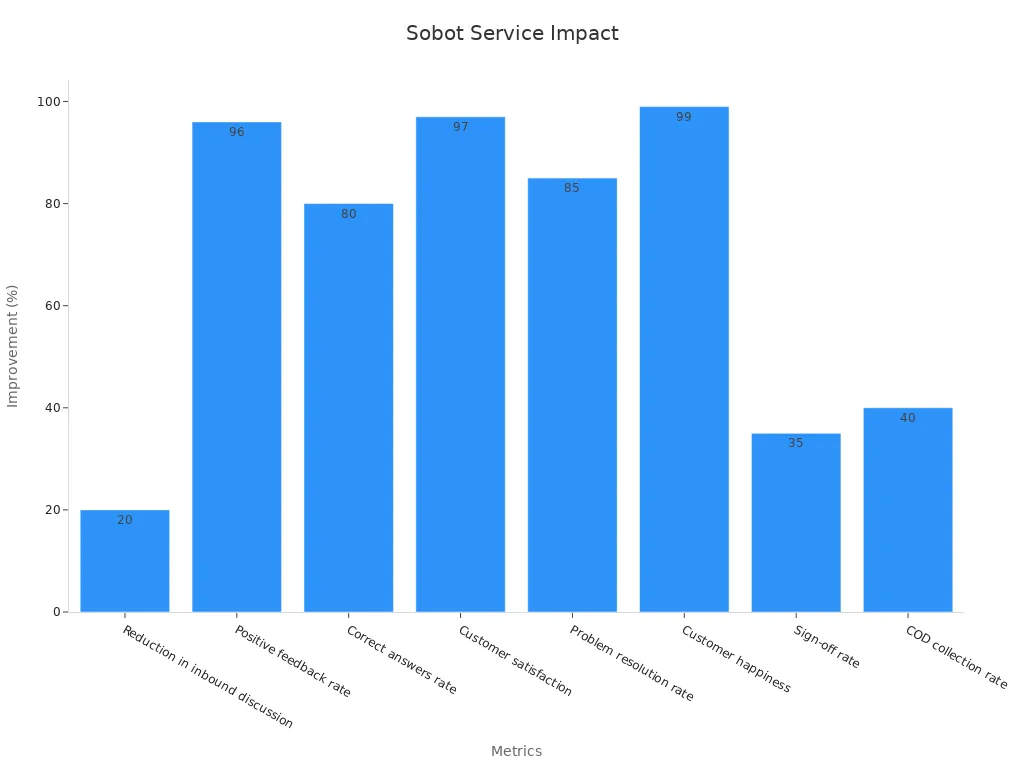
These improvements highlight how Sobot's technology enhances customer satisfaction and operational efficiency. For example, the 97% CSAT score reflects how well the system meets customer expectations, while the 85% problem resolution rate demonstrates its ability to address issues effectively.
Key Features Driving Success
Sobot's Voice/Call Center stands out due to its innovative features. These include:
- Intelligent IVR: This feature allows you to customize greetings, build menus, and route calls efficiently. It ensures that customers reach the right agent or department without unnecessary delays.
- AI-Powered Voicebot: The Voicebot uses advanced AI to recognize intent and interact intelligently. It handles repetitive queries, freeing agents to focus on complex issues.
- Unified Workspace: Agents can access all customer data in one place, enabling faster and more personalized responses.
- Global Number Availability: With access to phone numbers worldwide, you can provide support to customers across different regions seamlessly.
These features not only improve the quality of customer interactions but also reduce operational costs. For instance, the AI-powered Voicebot lowers the need for human intervention, saving time and resources.
Real-World Impact
Businesses using Sobot's Voice/Call Center have reported remarkable results. For example, a retail company reduced inbound discussions by 20%, allowing agents to focus on high-priority tasks. Another enterprise achieved a 40% increase in COD collection rates, showcasing the system's efficiency in handling financial transactions. These outcomes demonstrate how Sobot's technology can transform your customer service operations.
By integrating Sobot's Voice/Call Center into your business, you can achieve faster resolutions, higher satisfaction rates, and improved operational efficiency. This solution not only meets the demands of today's digital-first world but also prepares you for future challenges in customer service.
Benefits of Technology in Customer Service and Operations
Improved Efficiency and Faster Resolutions
Technology has revolutionized how businesses handle customer service, leading to increased efficiency and faster resolutions. Tools like AI-driven chatbots and automation streamline repetitive tasks, allowing agents to focus on more complex issues. This shift not only saves time but also enhances the quality of customer interactions. For example, AI-powered systems can resolve tickets 52% faster, reducing operational costs by 35%.
The impact of technology on efficiency is evident in key metrics:
| Efficiency Metric | Improvement Percentage |
|---|---|
| Customer Satisfaction (CSAT) | 38% |
| Time to Resolution | 31% |
| Average Handle Time (AHT) | 30% |
| First Response Time | 29% |
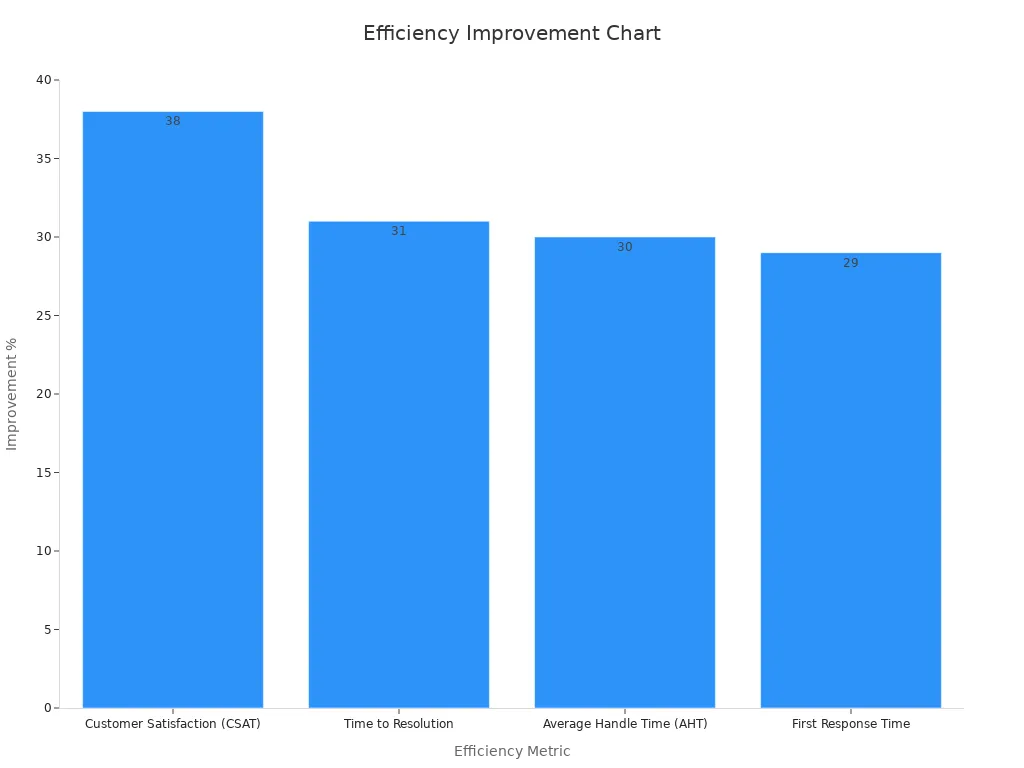
Sobot’s Voice/Call Center exemplifies this efficiency. Its intelligent IVR and AI-powered Voicebot reduce average handle times while improving first-contact resolution rates. These features ensure that your inquiries are addressed promptly, enhancing overall satisfaction.
Personalization and Tailored Customer Experiences
Personalization has become a cornerstone of modern customer service. Technology enables businesses to tailor interactions based on your preferences and behavior. CRM systems, for instance, centralize customer data, allowing agents to provide personalized recommendations and solutions. This approach not only improves satisfaction but also fosters loyalty.
Consider these statistics:
- 80% of consumers are more likely to make a purchase when brands offer personalized experiences.
- 48% of consumers have left a company's website due to a poorly curated experience.
- Companies using AI-driven personalization can reduce acquisition costs by up to 50%, lift revenues by 5-15%, and increase marketing efficiency by 10-30%.
Sobot’s unified workspace integrates CRM capabilities, enabling agents to access your data in real-time. This feature ensures that every interaction feels personal and relevant, whether through live chat support or voice communication. By leveraging personalization, businesses can create meaningful connections that drive customer satisfaction.
24/7 Accessibility and Global Reach
Modern customer service thrives on accessibility. Technology ensures that support is available around the clock, meeting the demands of today’s global economy. Self-service options, such as AI chatbots, operate continuously, providing instant assistance without long wait times. This availability aligns with consumer expectations, as 90% of customers prioritize immediate responses for inquiries.
Key benefits of 24/7 accessibility include:
- Self-service support eliminates the need for breaks, offering uninterrupted service.
- 53% of customers find long wait times frustrating, often leading them to switch to competitors.
- 71% of consumers aged 16–24 believe quick responses significantly enhance their experience.
Sobot’s solutions, such as its AI-powered chatbots and global number availability, ensure seamless support across time zones. Whether you need assistance during the day or late at night, these tools provide reliable and efficient service. This accessibility not only improves satisfaction but also strengthens your trust in the brand.
Cost-Effectiveness and Scalability for Businesses
Adopting advanced technology in customer service offers significant cost-effectiveness and scalability benefits. These advantages empower businesses like yours to optimize operations, reduce expenses, and adapt to growth seamlessly.
Cost-Effectiveness: Reducing Operational Expenses
Technology minimizes operational costs by automating repetitive tasks and streamlining workflows. For example, AI-powered chatbots handle multiple inquiries simultaneously, reducing the need for additional agents. This efficiency lowers labor costs while maintaining high-quality service. Additionally, tools like Sobot's Voice/Call Center provide features such as intelligent IVR and AI-powered Voicebots, which reduce average handle times and improve first-contact resolution rates. These improvements save time and resources, ensuring your business operates efficiently.
Investing in technology also delivers measurable returns. Businesses can track metrics like customer satisfaction and operational efficiency to evaluate the impact of their investment. For instance, companies using AI-driven solutions report a 35% reduction in operational costs and a 52% faster ticket resolution rate. These measurable outcomes demonstrate how technology enhances both affordability and efficiency.
Scalability: Growing with Your Business
Scalability ensures that your customer service technology grows alongside your business. As your customer base expands, scalable solutions like Sobot's omnichannel platform adapt to increased demand without compromising performance. This flexibility allows you to pursue new markets and respond quickly to competitive pressures.
Scalable technology also enhances agility and resilience. For example, Sobot's unified workspace integrates customer data across multiple channels, enabling your team to manage higher volumes of inquiries efficiently. This adaptability helps your business navigate uncertainties and maintain consistent service quality.
Key Metrics Supporting Cost-Effectiveness and Scalability
The following table highlights how technology supports cost-effectiveness and scalability in customer service:
| Aspect | Description |
|---|---|
| Affordability | The initial investment is reasonable and manageable within the organization’s budget. |
| Efficiency | The technology significantly improves operational processes and reduces waste. |
| Scalability | The technology can grow with the business and adapt to changing needs. |
| Measurable ROI | The benefits and returns can be clearly quantified and tracked, ensuring accountability. |
By leveraging these aspects, your business can achieve sustainable growth while maintaining cost efficiency.
Real-World Impact
Consider a scenario where a retail company adopts Sobot's Voice/Call Center. The company experiences a 20% reduction in inbound discussions and a 40% increase in COD collection rates. These results highlight how scalable and cost-effective technology transforms customer service operations. Whether you're a small business or a global enterprise, these tools ensure you can meet customer expectations while optimizing resources.
Incorporating technology into your customer service strategy not only reduces costs but also prepares your business for future challenges. By choosing scalable solutions, you can ensure long-term success and adaptability in an ever-changing market.
Challenges and Limitations of Technology in Customer Service
Balancing Automation with the Human Touch
Automation has transformed customer service, but it often struggles to replicate the empathy and understanding of human interaction. While younger customers appreciate the speed and convenience of automated tools, older customers frequently prefer speaking with live agents. This generational divide highlights the importance of balancing technology with human support.
High-touch customer service remains a key differentiator in a world dominated by bots and algorithms. Molly Kerrigan, Senior Director of Retention at Shinesty, emphasizes that preserving quality interactions during growth is essential.
Despite the benefits of automation, 64% of consumers feel businesses overlook the human element in online experiences. Additionally, 75% express frustration when automated tools fail to meet their needs, underscoring the demand for human support. Companies that integrate automation with live agents achieve higher customer satisfaction (CSAT) scores, with automated brands scoring 4.51 compared to 4.46 for non-automated ones.
Sobot’s solutions, such as its AI-powered Voicebot, strike this balance effectively. By automating repetitive tasks while enabling seamless transitions to human agents, Sobot ensures your experience remains efficient and empathetic.
Addressing Technical Errors and System Downtime
Technical errors and system downtime can disrupt customer service operations, leading to negative experiences. Nearly 90% of IT leaders report that digital disruptions reduce customer confidence, while 59% note an increase in incidents affecting customers.
| Consequence | Description |
|---|---|
| Lost Productivity | Employees become idle when systems are unavailable. |
| Lost Business Opportunities | Customers may abandon purchases due to service interruptions. |
| Damaged Brand Image | Repeated downtime tarnishes reputation and trust. |
| Data Loss | Vulnerabilities arise from corrupted or stolen data during downtime. |
For small and medium-sized businesses, downtime can have severe consequences. Around 37% have lost customers, and 17% have lost revenue due to these disruptions. Sobot’s Voice/Call Center mitigates these risks with a 99.99% system uptime, ensuring reliable and uninterrupted service. Its global network and encrypted data transfer further enhance stability and security, protecting your business from downtime-related challenges.
Privacy and Data Security Concerns
Privacy and data security remain top concerns for customers in the digital age. A staggering 94% of organizations acknowledge that customers would stop buying from them if data protection measures were inadequate. Similarly, 71% of consumers say they would cease doing business with companies that mishandle sensitive information.
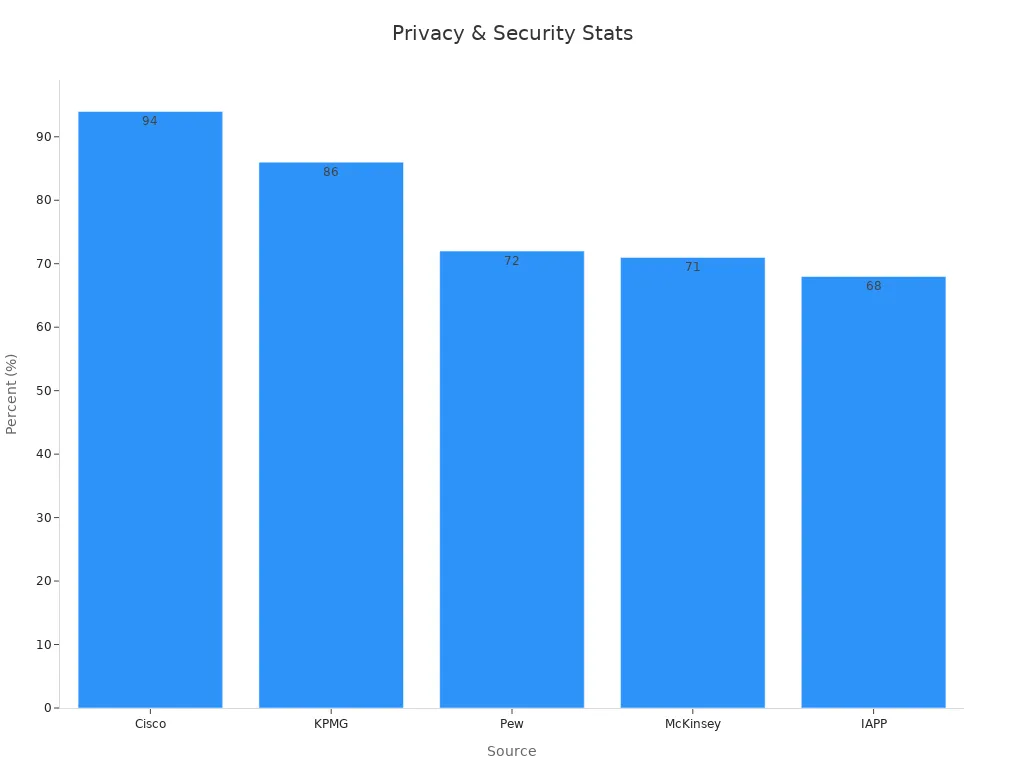
Sobot addresses these concerns by prioritizing encrypted data transfer and secure system integration. Its solutions comply with global standards, ensuring your data remains safe while delivering efficient customer service. By adopting responsible data practices, businesses can build trust and foster long-term loyalty.
Overcoming Resistance to Technological Change
Resistance to technological change often arises when employees feel uncertain or excluded from the process. Addressing this resistance requires clear communication, inclusive strategies, and a focus on building trust. You can help your team embrace change by following these proven methods:
- Involve Employees Early: Engaging employees from the start fosters a sense of ownership. Netflix, for example, involved its workforce at all levels during its shift from DVD rentals to streaming. This approach not only reduced resistance but also helped Netflix become a global leader in streaming services.
- Promote a Culture of Innovation: Spotify adopted cross-functional teams and an agile methodology to empower employees. This strategy encouraged innovation and boosted motivation, demonstrating how a bottoms-up approach can drive success.
- Invest in Training and Support: Providing training ensures employees feel confident using new tools. When employees understand how technology improves their work, they are more likely to support its adoption.
Research underscores the importance of these strategies. A McKinsey study reveals that 70% of change initiatives fail due to resistance. However, organizations with highly engaged employees experience a 17% productivity boost and a 41% reduction in absenteeism, according to Gallup. These numbers highlight the value of fostering engagement and trust during transitions.
Sobot’s solutions, such as its Voice/Call Center, simplify this process by offering user-friendly interfaces and seamless integration. These features reduce the learning curve, making it easier for your team to adapt. By prioritizing employee involvement and support, you can ensure a smoother transition and improve customer satisfaction.
Tip: Communicate the urgency of change to your team. When employees understand the "why," they are more likely to embrace the "how."
Future Trends in Customer Service Technology

AI and Hyper-Personalization in Customer Experience
AI is reshaping how businesses interact with you by delivering hyper-personalized experiences. Companies like Amazon, Netflix, and Spotify already use AI to analyze your preferences and behaviors. For example, Amazon suggests products based on your shopping habits, while Netflix recommends shows tailored to your viewing history. Spotify even curates playlists like "Discover Weekly" to match your music tastes. By 2025, hyper-personalized experiences are expected to generate up to 40% more revenue for retailers compared to non-personalized approaches.
This trend emphasizes the importance of understanding your unique needs. AI tools, such as Sobot's AI-powered chatbots, enhance personalization by analyzing data in real-time. These tools ensure that every interaction feels relevant and meaningful, improving your satisfaction and loyalty. As businesses continue to adopt AI, you can expect more tailored and engaging customer experiences.
The Rise of Voice Assistants and Conversational AI
Voice assistants and conversational AI are becoming essential in customer service. These tools allow you to interact with businesses through natural conversations, making support faster and more intuitive. Metrics like call abandonment rates and first-call resolution highlight their effectiveness. For instance:
| Metric | Description |
|---|---|
| Call Abandonment Rate | Measures the percentage of customers who leave before completing a task. |
| First Call Resolution (FCR) | Tracks the ability to resolve issues during the first interaction. |
| Increased CSAT | Evaluates customer satisfaction after using voice assistants. |
Sobot's AI-powered Voicebot exemplifies this innovation. It uses advanced learning capabilities to understand your intent and provide accurate responses. This technology reduces wait times and improves efficiency, ensuring your interactions are seamless. As voice assistants evolve, they will play a larger role in enhancing your overall experience.
Integration of AR, VR, and Immersive Technologies
Immersive technologies like AR and VR are transforming customer service by creating interactive and engaging experiences. AR helps you visualize products before purchasing, while VR offers immersive training for customer service teams. For example, companies using AR and VR can elevate your journey by making it more memorable and personalized.
These technologies also improve satisfaction and loyalty. Imagine trying out furniture in your home using AR or receiving virtual assistance through VR. Sobot's commitment to innovation ensures that businesses can integrate these tools effectively, enhancing your interactions. As AR and VR become more accessible, they will redefine how you connect with brands.
Ethical AI and Responsible Data Practices
Ethical AI and responsible data practices are becoming essential in customer service technology. As businesses increasingly rely on AI to enhance operations, ensuring fairness, transparency, and accountability in these systems is critical. Customers expect companies to handle their data responsibly, and failing to meet these expectations can damage trust and loyalty.
A recent study highlights the growing importance of responsible AI (RAI). While 84% of respondents believe RAI should be a top management priority, only 56% confirm it has achieved that status. Furthermore, just 25% of companies report having a fully mature RAI program. These statistics reveal a significant gap between awareness and implementation.
| Statistic | Value |
|---|---|
| Companies practicing some level of responsible AI | 52% |
| Companies with limited implementation | 79% |
| Respondents believing RAI should be a top management priority | 84% |
| Respondents confirming RAI has achieved top management priority status | 56% |
| Companies with a fully mature RAI program | 25% |
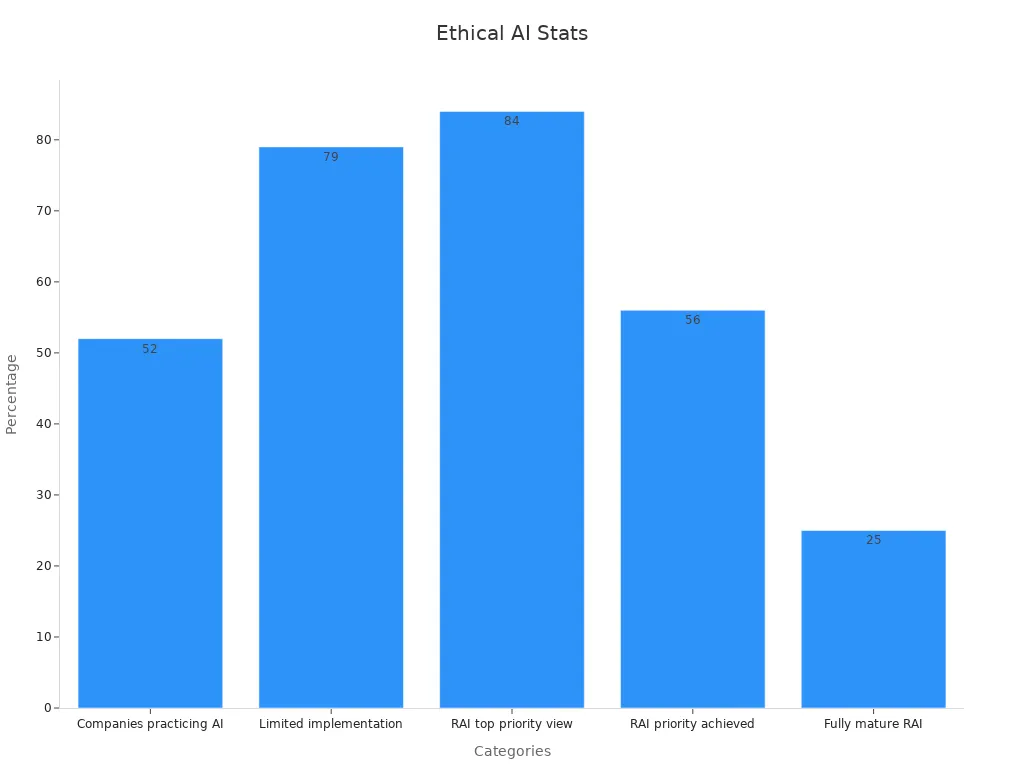
Sobot prioritizes ethical AI by embedding transparency and fairness into its solutions. For example, its AI-powered Voicebot uses intent recognition to provide accurate responses while safeguarding customer data through encrypted transfers. These practices ensure that your interactions remain secure and trustworthy.
By adopting ethical AI and responsible data practices, businesses can build stronger relationships with customers. These efforts not only enhance satisfaction but also position companies as leaders in the evolving landscape of customer service technology.
Sobot's Vision for the Future of Customer Service
Sobot envisions a future where customer service technology seamlessly integrates innovation with empathy. The company aims to redefine how businesses interact with customers by leveraging cutting-edge tools like AI, automation, and omnichannel platforms.
One of Sobot's key goals is to enhance personalization. Its unified workspace consolidates customer data, enabling agents to deliver tailored solutions. This approach ensures that every interaction feels meaningful and relevant. Additionally, Sobot plans to expand its use of AI-driven technologies, such as its Voice/Call Center, to improve efficiency and reduce response times.
Sobot also emphasizes accessibility. With global number availability and 24/7 support, the company ensures that customers receive assistance whenever and wherever they need it. These features align with the growing demand for instant and reliable service.
Looking ahead, Sobot is committed to ethical AI and responsible data practices. By prioritizing transparency and security, the company aims to set new standards in customer service technology. This vision reflects Sobot's dedication to helping businesses build lasting relationships with their customers while staying ahead in a competitive market.
Technology has revolutionized customer service and operations, reshaping how businesses interact with customers. Advancements like AI, omnichannel platforms, and self-service tools have enhanced efficiency, personalization, and customer satisfaction. For example, 88% of customers now expect online self-service portals, while 60% prefer personalized experiences. These innovations empower businesses to deliver faster resolutions and build stronger customer loyalty.
| Technology Advancement | Key Benefits |
|---|---|
| AI | Enhances customer interactions and provides personalized support. |
| Omnichannel Support | Maintains unified customer profiles and ensures consistent experiences across channels. |
| Cloud-Based Platforms | Offers scalability, flexibility, and remote access for customer service teams. |
| Self-Service Technologies | Empowers customers to resolve issues independently, improving satisfaction and reducing workload. |
| Data Analytics | Provides insights into customer behavior and preferences, enabling targeted service. |
| Robotic Process Automation (RPA) | Automates routine tasks, allowing agents to focus on complex issues and improving response times. |
Sobot’s Voice/Call Center exemplifies how businesses can integrate cutting-edge tools to optimize customer care operations. Its intelligent IVR and AI-powered Voicebot ensure seamless customer interactions while maintaining a human-centric approach. By adopting such solutions, you can enhance customer service operations, improve retention, and stay ahead in a competitive market.

To thrive in today’s landscape, businesses must embrace emerging technologies. These tools not only improve customer care operations but also foster long-term customer loyalty. By prioritizing innovation and empathy, you can create exceptional customer experiences that drive success.
FAQ
What is the role of AI in improving customer care?
AI enhances customer care by automating repetitive tasks, analyzing data, and providing instant responses. Tools like Sobot's AI-powered Voicebot improve efficiency and personalization, ensuring faster resolutions and better customer satisfaction.
How does omnichannel support improve the customer care experience?
Omnichannel support integrates multiple communication channels into one platform. This approach ensures consistent interactions and seamless transitions between channels, enhancing your customer care experience. Sobot's unified workspace exemplifies this integration.
Why is personalization important in customer care?
Personalization builds stronger connections by tailoring interactions to your preferences. CRM systems, like those in Sobot's solutions, centralize customer data to deliver relevant recommendations and improve satisfaction.
How does Sobot ensure reliable customer care services?
Sobot guarantees reliability through features like 99.99% system uptime and encrypted data transfer. Its Voice/Call Center provides global number availability and AI-powered tools to ensure seamless customer interactions.
What are the benefits of 24/7 customer care accessibility?
24/7 accessibility ensures you receive support anytime, anywhere. Self-service tools like Sobot's AI chatbots operate continuously, reducing wait times and improving satisfaction.
See Also
Transforming Support With AI-Powered Customer Service Agents
Enhancing Operational Efficiency Through AI Customer Service Tools
Essential Guidelines for Selecting Social Media Support Software
